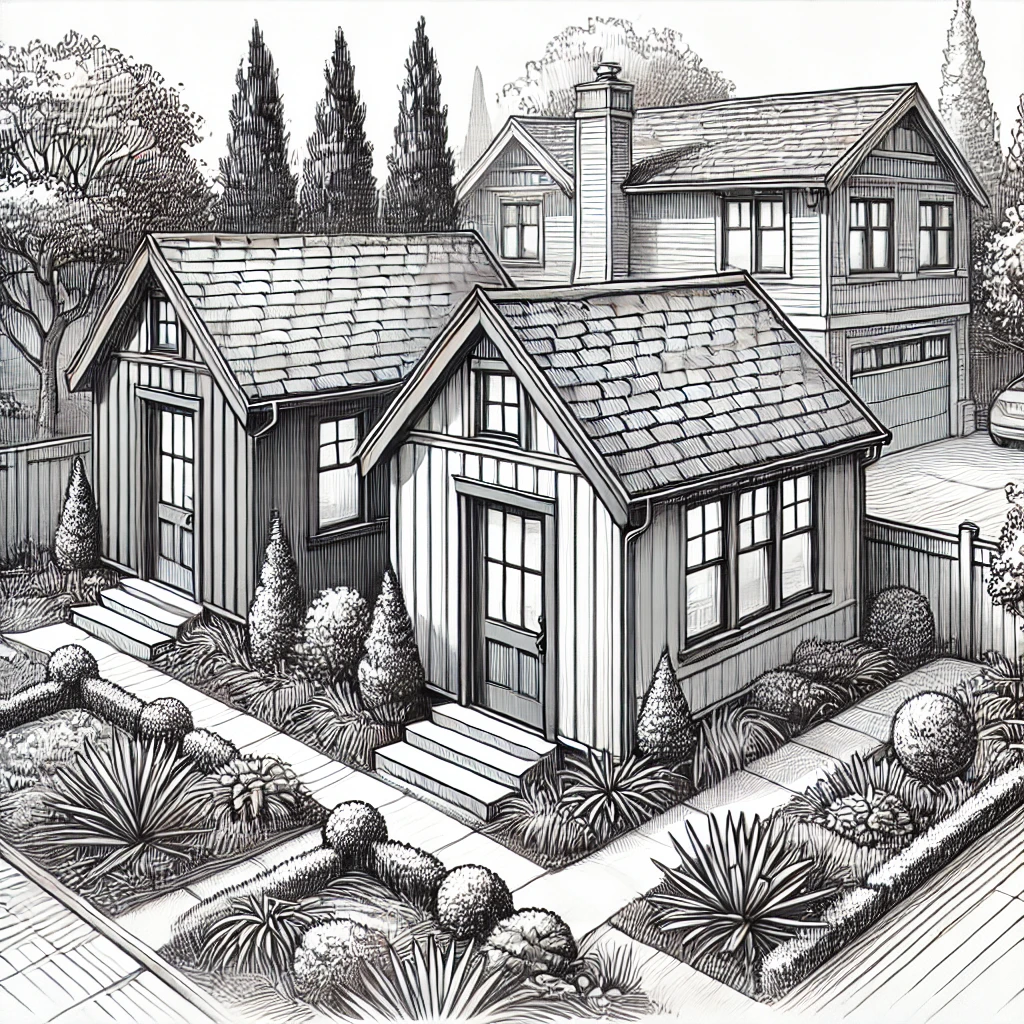Accessory Dwelling Units (ADUs) have grown massively in popularity thanks to favorable legislation in certain states.
This guide will cover the specifics of how many ADUs you can have on a property, how it varies from state to state, and the main regulations to look out for.
What Is An ADU?
Accessory Dwelling Units (ADUs) are secondary housing units on the same property as a primary residence.
They provide additional living space and can be used for rental income, guest accommodations, or housing family members.
The number of ADUs a property can have depends on local zoning laws, building codes, and state regulations.
State and Local Regulations
There are no federal regulations governing ADUs, which means the number of ADUs allowed on a property varies by state and local regulations.
In California – one of the most ADU-friendly states – recent legislation has made it easier to build multiple ADUs on a single property.
California’s Legislation
California is a leader in ADU legislation, and as it’s one of the most popular places for ADUs, it makes sense to look at how they approach the situation of multiple ADUs.
According to Assembly Bill 68, which took effect on January 1, 2020, homeowners can build up to two ADUs on a single-family lot: one detached ADU and one junior ADU (JADU).
- Detached ADUs: These are separate from the primary residence and can be up to 1,200 square feet.
- Junior ADUs (JADUs): These are within the walls of the primary residence and can be up to 500 square feet.
Local Zoning Laws
Local zoning laws can further restrict or expand the number of ADUs allowed.
For example, cities like Los Angeles have specific ordinances that align with state laws but also include additional provisions to address local housing needs.
HOA Considerations
In California specifically, the ADU law specifically prohibits HOAs from banning ADUs or imposing harsh restrictions on them.
State and local laws do override HOA rules, but this doesn’t stop HOAs from restricting ADUs in a lot of other places, especially where the law does not target them as directly.
If the state law specifically allows for ADUs, there isn’t anything a HOA can do about it, but they very well will try and it can make the overall process very difficult.
Factors Influencing the Number of ADUs
Several factors influence how many ADUs you can have on your property, not just how many you can build in theory, but also the practical considerations that come with building several ADUs.
Property Size and Zoning
The size of your property and its zoning classification are crucial. Larger lots in residential zones typically allow more ADUs, but this is just a general rule.
Always research your local legislation to get an idea of exactly what is – and what isn’t – allowed.
Building Codes and Regulations
Building codes ensure that all construction meets safety and habitability standards.
Each ADU must comply with these codes, and this can impact how many ADUs are allowed in total.
Utility Connections
Each ADU must have adequate utility connections, including water, electricity, and sewage.
This can have an impact on the amount of ADUs you can build, simply from a cost and practical point of view.
Example Scenarios of Multiple ADUs
Let’s take a look at a few examples of multiple ADUs and how it would play out in reality.
Single-Family Lots
On a typical single-family lot in California, you can build to a maximum of one ADU and one JADU:
- One Detached ADU: Separate from the main house, up to 1,200 square feet.
- One JADU: Within the existing structure of the primary residence, up to 500 square feet.
In other places, like Oregon, you’re only allowed one ADU on sites with a duplex, and two ADUs on multi-dwelling, commercial, or EX zones (See regulations here).
Multi-Family Lots
California law allows two detached ADUs for multi-family lots, which can be separate from the existing multi-family buildings.
It also allows for the Conversion of Existing Non-Livable Spaces, Such as basements, garages, or storage rooms, into additional ADUs, up to 25% of the existing units.
Practical Considerations of Multiple ADUs
Building multiple ADUs obviously comes with a lot of practical considerations, aside from getting the permission to build them in the first place.
Planning and Design
Proper planning and design are essential for adding multiple ADUs.
Engaging with an architect or a designer familiar with local regulations can help optimize the use of space and ensure compliance with all codes.
You can also use Presite to play around with different floorplans.
Financing and Budgeting
Building multiple ADUs can be expensive, and while there are things you can do to lower the overall expenditure, it will still be a costly endeavor.
The average cost to build one ADU is anywhere from $20,000 to $150,000.
Impact on Property Value
ADUs can significantly increase property value, up to 35% in some cases.
However, the overall impact depends on the quality of construction and the local real estate market. Remember that if you’re building several ADUs, it can impact the type of buyer who would be looking to purchase the property.
